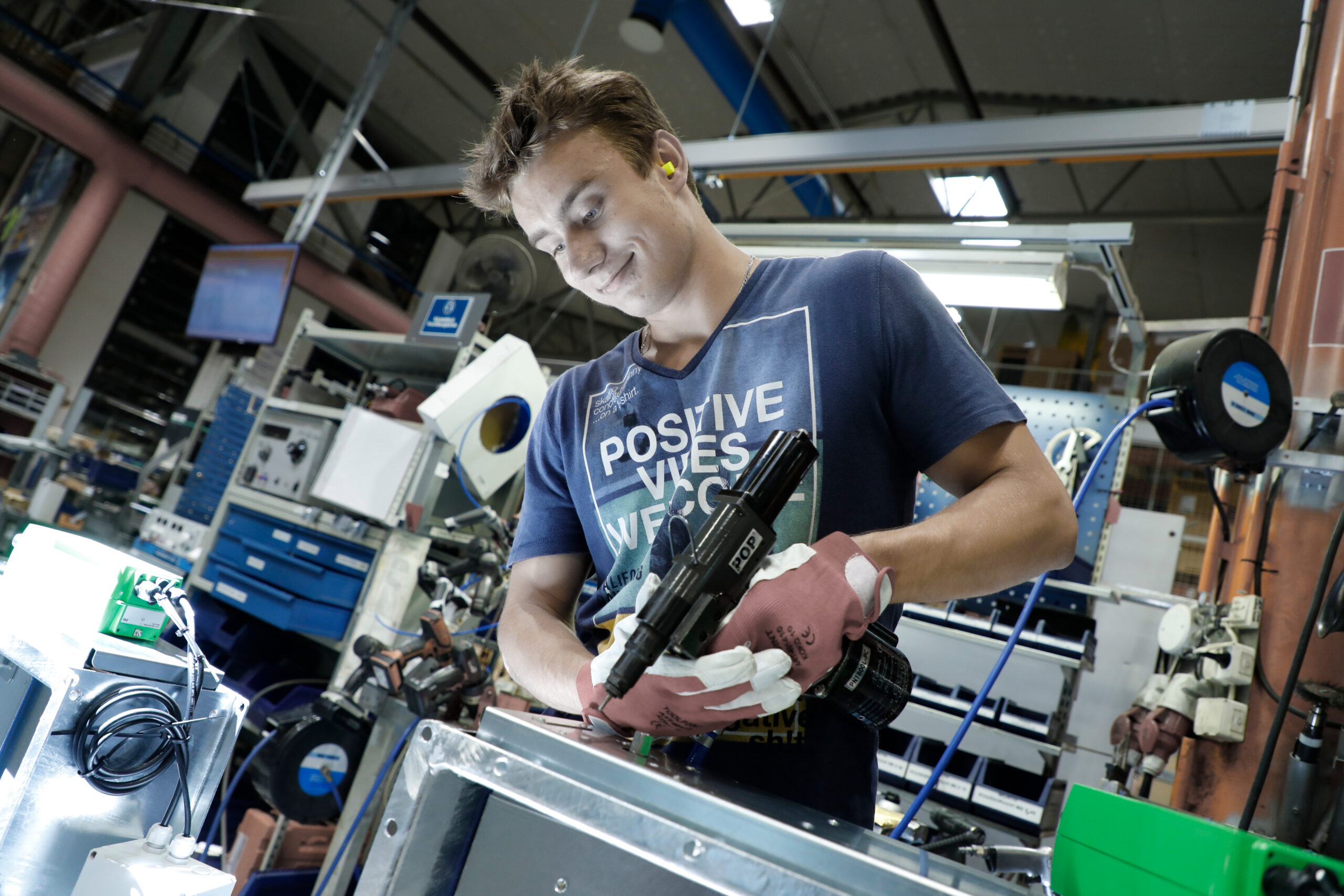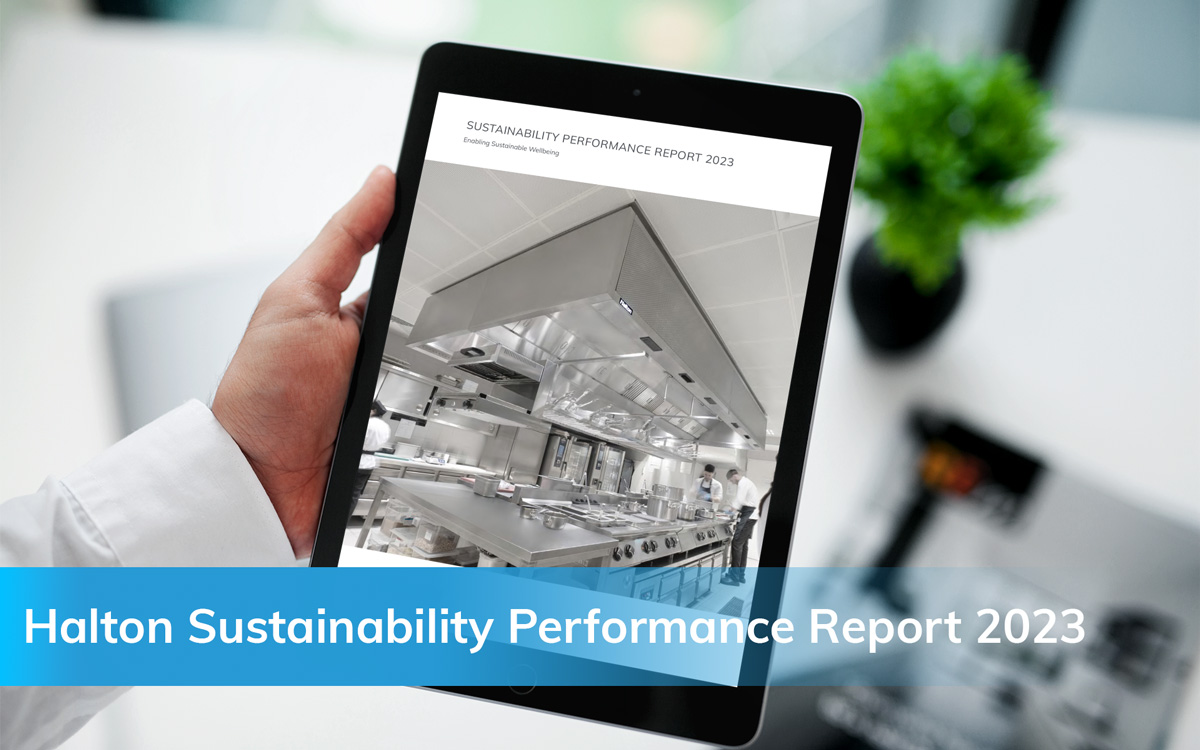Blog Article
From Kitchenventilation.com
Ghost Kitchen Exhaust Success Routine
The commercial kitchen ventilation (CKV) industry has done a great job of defining the step by step approach for optimizing CKV design by focusing on the four key areas of: exhaust hood, exhaust fan, replacement air and controls. The goal of course is to develop a design that effectively captures, contains and exhausts the heat and emissions from cooking while simultaneously providing a comfortable kitchen and doing so at the lowest cost (CAPEX and OPEX) possible. Thankfully, this single-kitchen approach can be utilized for a Ghost Kitchen also known as Virtual Restaurant ventilation with twenty to thirty kitchens, but with a few modifications.
Exhaust hood optimization for Ghost Kitchens or Virtual Restaurants
The first, and most important, step is to specify a highly efficient exhaust hood. The amount of air that’s exhausted establishes the foundation for the entire commercial kitchen ventilation design. Getting this right makes the rest of the system design that much easier and more efficient. For a typical restaurant the best path to a high-efficiency hood is to have it designed based upon the heat load of the cooking equipment. Sophisticated modeling tools can be used to define the minimum exhaust based upon the heat the appliances generate rather than simply following a cfm-per-foot rule of thumb.
Unfortunately, for Ghost Kitchens, the hood specification may not be as straightforward. Since they may not know in advance what equipment the operator may need, Ghost Kitchens or Virtual Restaurant take one of two paths for their hood design. The first is to define and provide a given cooking equipment lineup – taking the choice of equipment away from the operator. This path enables the Commercial Kitchen Ventilation provider to utilize the same optimization modeling as that for a traditional restaurant and establishes the most efficient exhaust rate at the outset of the design process. The second is to provide a hood of a given length and design in enough capacity to accommodate a cooking lineup that includes heavy-duty appliances. Unfortunately, since this option must accommodate the worst case scenario, it also designs in waste up front. This waste can be mitigated with more sophisticated controls that will be discussed further in this article.
Exhaust fan selection
Selecting an exhaust fan for a typical restaurant is a pretty simple task. Designers utilize selection software to specify a fan and curb that’s usually mounted on the roof. The biggest decisions deal with the efficiency of the motor, the drive package and features to make it easier to adjust the speed. A Ghost Kitchen facility can follow this same approach when there’s easy access to the roof and the roof has the space and ability to support the weight of twenty to thirty exhaust fans.
Rather than having an exhaust fan for every kitchen, another option is to connect multiple kitchens to a single, larger exhaust fan. This solution reduces the number of roof penetrations and can be particularly useful when roof access is difficult or space is at a premium. This option also requires the addition of balancing dampers in the hoods in order to ensure the proper exhaust is achieved in each kitchen.
Replacement Air
We all know that the air exhausted through the hood must be replaced with an equal amount of outdoor air in order to keep the restaurant properly balanced. For traditional restaurants the ideal solution is to first bring as much outdoor air as possible through the existing RTU’s, since they’re already there and available, and transfer some of this air from the dining room to the kitchen. The final step is to specify the smallest possible makeup air unit to provide the remaining replacement air (at the proper temperature) in the kitchen. This method minimizes replacement air CAPEX and ensures a more comfortable kitchen.
The replacement air solution for Ghost Kitchens is made more complicated by the absence of dining rooms. While traditional restaurants transfer a significant amount of replacement air from the dining room, this air is not available for Ghost Kitchens. At best Ghost Kitchens can utilize some transfer air from the corridors. The result is that Ghost Kitchens must bring in almost all the replacement air directly into the kitchen in a manner that doesn’t compromise comfort or hood performance.
It’s not uncommon in traditional restaurants to see designs that don’t include comfort cooling of the make-up air (MUA) in the hope that this air will immediately be exhausted without adding any heat load to the kitchen. Not surprisingly, studies have shown this isn’t the case – unconditioned air does negatively impact kitchen comfort. In a single-kitchen design the portion of this air is relatively small and this negative impact may not be that significant. However, when this air approaches 100% of the exhaust air, as in a Ghost Kitchen, the impact on comfort will be substantial. Therefore, conditioning all the replacement air in Ghost Kitchens may be even more important that for traditional kitchens. Conditioning replacement air can be costly, so it’s obvious that the design should do all it can to reduce the required amount of replacement air.
Like the exhaust fans, if roof space is available, the replacement air design can include a MUA unit for each one or two kitchens. An alternate approach is to connect multiple kitchens to a single conditioned replacement air system. Coupled with balancing dampers, this option can be viable when space for mechanical systems is at a premium.
Controls for Ghost Kitchens
For traditional kitchens the exhaust fan is controlled by a simple on/off switch and may include a temperature interlock as a backup. If the exhaust volume is high enough, variable speed controls are used to save energy. Despite having a total exhaust that could exceed 50,000 cfm, depending on exhaust fan and replacement air configuration, Ghost Kitchens may be able to utilize these same simple controls. If the Ghost Kitchen/Virtual Restaurant design has a single fan and MUA unit for each kitchen, the simple on/off method may be the most effective since the fan and MUA unit will only operate when the kitchen is occupied. However, if multiple kitchens are connected to the exhaust fan and replacement air system, then a more sophisticated control will be advantageous.
In the latter scenario, the hoods should be equipped with automatic balancing dampers and should be capable of measuring the flow rate in the hood. Each kitchen should also include a VAV box that can measure and vary the replacement air flow rate. The exhaust fan and replacement air unit must also be able to operate at variable speed based upon the number of kitchens in operation. At the core of these mechanical components is the controller – the brain of the system. When cooking is sensed, rather than simply turning on the exhaust to full power, the controller will exhaust at the minimum rate required based on the heat given off by the appliance. This is accomplished by adjusting the speed of the exhaust fan and the hood damper simultaneously. At the same time, the controller will provide the proper amount of replacement air using the same technique to keep the kitchen balanced. As additional kitchens turn on and others turn off, the controller must be capable of measuring and adjusting in real time. While this sounds straightforward, it’s important to carefully vet your controls supplier to ensure their system has the necessary capabilities.
The Ghost Kitchen or Virtual Restaurant market is rapidly growing and will likely become more commonplace in the years to come. Thankfully, the proven success routines to optimize commercial kitchen ventilation design and performance in single kitchen restaurants can be adapted and applied for use in this growing market.


